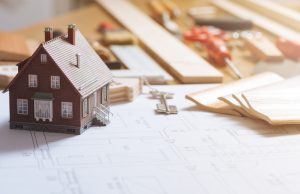For more than a decade, 3d printing has been widespread in prototyping. However, it’s failed to justify the hype when it comes to large-scale manufacturing. This is in spite of all of the purported benefits of the technology, which can, in theory, create bespoke objects which are much more complex than could be realistically created through more traditional means.
Among the benefits of 3d printing are environmental. Let’s take a closer look at how this technology might benefit the natural world.
How does 3d printing work?
3d printing, or additive manufacture, is a process via which physical objects are created from digital ones. There are many ways of doing this. A bed of powdered plastic might be treated with a high-powered laser, melting certain areas, and building the object in layers. On the other hand, molten material might be directly extruded onto a surface.
In the world of construction, 3d printing has been around for a while. It’s able to create entire buildings in a very short time span, and at very low cost – once the investment has been made in the machinery. The extruded materials can be concrete, clay, or a variety of others.
The legal problems
There are significant legal obstacles to the widespread adoption of 3d printing in construction. These come in two categories.
The first concerns the safety of site workers. 3d printing machinery is huge and complex, and training for these devices is not widely available. There is the possibility of a danger to health and safety, which would put construction site operators in legal trouble. They owe a duty of care to site workers, and if there’s even a remote risk of concrete being extruded in the wrong place, or of workers being caught between the building and the machine arm, then more testing might be required.
Home 3d prints can sometimes fail, often with spectacular results. Construction firms might therefore be wary of deploying the technology on a larger scale. ESG consulting firms will almost certainly be involved in weighing the level of risk.
We should also consider the regulations governing buildings, which are there to ensure that the structure itself is safe and fit for habitation. It remains to be seen how well 3d-printed buildings might adhere to these regulations, and whether fundamental problems with the technology might yet be uncovered.
The environmental benefits
There are a few reasons to suppose that 3d printing might be beneficial for the health of the planet.
The cement itself can be used much more efficiently, as it’s being directly placed where it’s needed. One Californian company claimed to have produced a cement that’s 60% less CO2-emissive than the traditional sort.
We should also consider the simplicity of this kind of structure. With just one material forming the walls, the supply chain is hugely simplified. 3d-printed homes are often much smaller and cheaper to heat than their counterparts. What’s more, they can be designed in energy-saving ways that wouldn’t be practicable using traditional methods.













